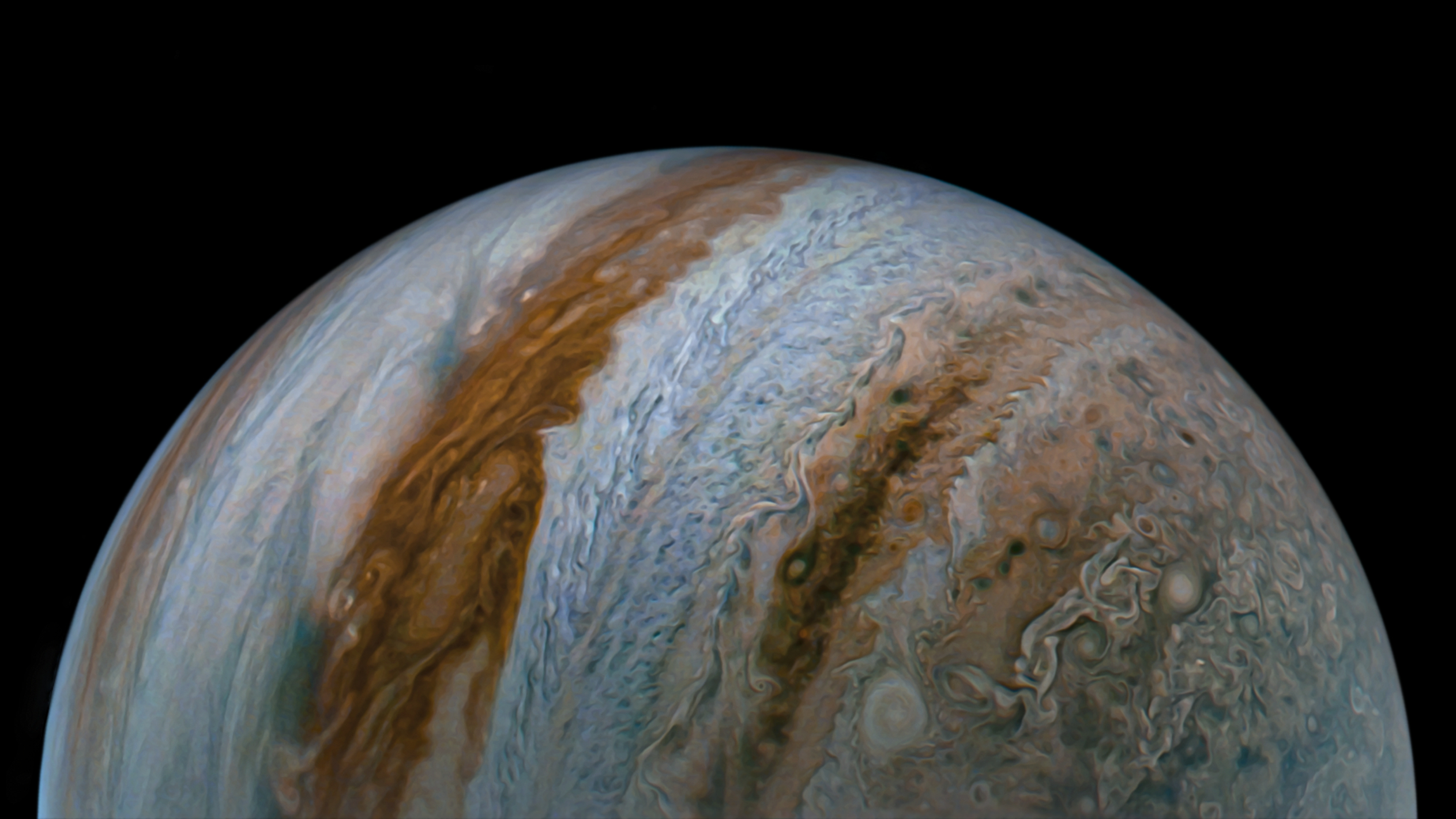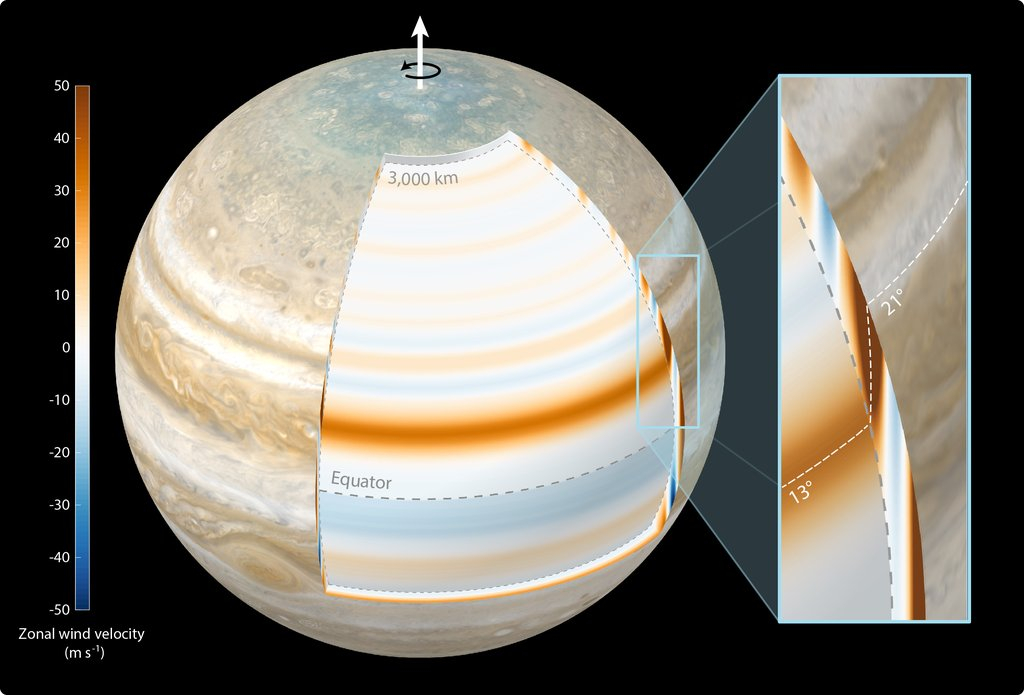
NASA’s Juno spacecraft has observed Jupiter's winds penetrating the gas giant’s atmosphere. These findings could ultimately reveal more about Jupiter's mysterious, and quite turbulent, interior.
What's more, the Jovian gravity data collected by Juno showed a team of international scientists that these atmospheric winds are whipping through the gas giant planet in a "cylindrical" manner, moving parallel to the planet's spin axis.
The NASA spacecraft has had a ringside seat to the violent goings-on in Jupiter's atmosphere since 2016, when it arrived at the largest planet in our solar system. Juno has dutifully made around 55 flybys of Jupiter and continues to use a suite of science instruments to peer deep into the world's atmosphere, as well as through surface clouds to observe the planet’s inner workings.
"As Juno's journey progresses, we’re achieving scientific outcomes that truly define a new Jupiter and that likely are relevant for all giant planets, both within our solar system and beyond," Juno's principal investigator, Scott Bolton, said in a statement. "The resolution of the newly determined gravity field is remarkably similar to the accuracy we estimated 20 years ago. It is great to see such agreement between our prediction and our results."
Related: Evidence of alien life may exist in the fractures of icy moons around Jupiter and Saturn
Measuring the winds of Jupiter
As Juno flies past Jupiter at around 130,000 miles per hour (209,000 kilometers per hour) — which is around 85 times the top speed of a fighter jet — NASA’s Deep Space Network antennas track the spacecraft’s radio signals, measuring tiny changes in velocity.
These shifts, which can be as small as 0.01 millimeters per second, arise due to variations in the planet’s gravity field. And mapping those gravity variations essentially lets researchers look into Jupiter’s atmosphere.
This radio science approach has already led to a slew of discoveries for Juno, including the revelation that deep within Jupiter lies a dilute core that may have been created when the planet suffered a giant collision with a round body long ago. It has also allowed researchers to measure the depths of Jupiter's various zones and belts — extending from its cloud tops down around 1,860 miles (3,000 kilometers).
Settling a 20-year-long argument about Jupiter’s winds

Modeling the cylindrical nature of Jupiter's atmospheric winds required the team behind this research to invoke a step beyond radio measurements. They turned to a mathematical technique previously used to model gravitational variations and surface elevations of rocky planets like Earth. Applying this mechanism to Juno's data delivered a resolution of Jupiter’s winds four times greater than what has been achieved previously by Jupiter missions Voyager and Galileo.
"We applied a constraining technique developed for sparse data sets on terrestrial planets to process the Juno data," Ryan Park, Juno scientist and lead of the mission’s gravity science investigation, said in the statement. "This is the first time such a technique has been applied to an outer planet."
The measurements of Jupiter’s gravity field aligned with 20-year-old models of Jupiter’s powerful east-to-west zonal flows, which had suggested the winds extend down from cloud-level zones and belts through the atmosphere. Instead of extending in all directions, however, the new measurements support the idea that those zonal flows move inward cylindrically, and are orientated along the direction of Jupiter’s rotational axis.
This simply means with these new results, Juno has settled a debate about the deep atmospheric winds of Jupiter and their structure — a debate than first started in the 1970s.
"All 40 gravity coefficients measured by Juno matched our previous calculations of what we expect the gravity field to be if the winds penetrate inward on cylinders," study lead author and Juno co-investigator Yohai Kaspi said. "When we realized all 40 numbers exactly match our calculations, it felt like winning the lottery."
The technique can now be applied to planets outside the solar system to build a high-resolution picture of their atmospheres as well.
As for Juno, its mission around Jupiter shall continue, as it conducts a series of flybys of the Jovian moon Io. On Dec. 30, the spacecraft will make its closest flyby of the volcanic moon, passing just around 930 miles (1,500 kilometers) above its surface.
The Juno results were published earlier this year in the journal Nature Astronomy.







